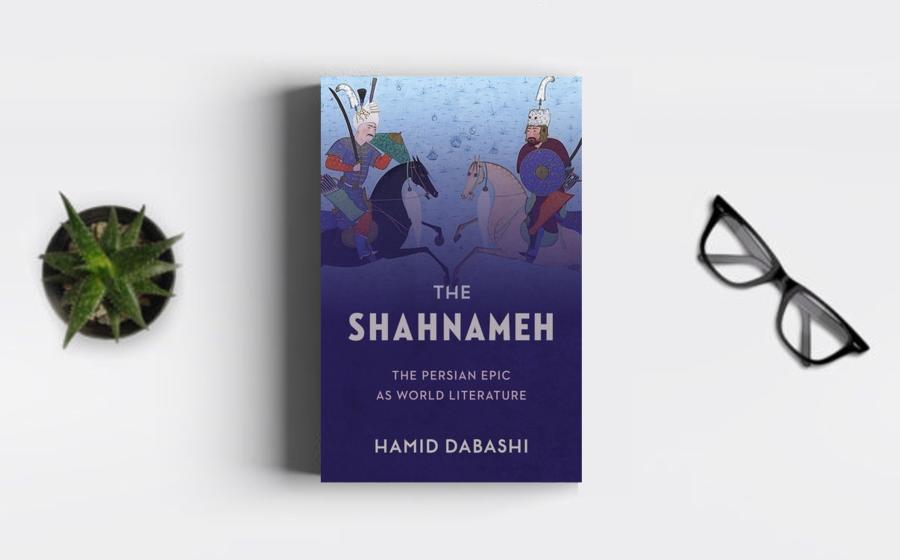"The Shahnameh," also known as "The Book of Kings,"
stands as a magnum opus of Persian literature, composed
by the revered poet Ferdowsi in the 10th century. This
epic work weaves a tapestry of Persian history,
mythology, and heroic tales, chronicling the rise and
fall of kings, the struggles of noble heroes, and the
enduring spirit of a culture. As a time-tested epic,
"The Shahnameh" not only preserves the rich heritage of
Iran but also transcends cultural boundaries with its
universal themes of heroism, justice, and the resilience
of the human spirit.
At its core, "The Shahnameh"
is an epic poem that unfolds in nearly 60,000 verses,
making it one of the longest and most significant works
in world literature. Ferdowsi dedicated over three
decades of his life to the composition of this grand
narrative, written in classical Persian (Farsi),
showcasing his mastery of language and poetic form. The
epic serves as a literary monument, preserving the
linguistic richness and cultural identity of Iran
through its artful verses.
One of the primary
reasons "The Shahnameh" has endured through the
centuries is its role as a custodian of Persian history
and mythology. Ferdowsi undertook the monumental task of
compiling and preserving the historical and legendary
narratives of Iran, spanning from the creation of the
world to the Islamic conquests. The epic begins with the
mythical tales of Persian kings and legendary figures,
including the heroic deeds of Keyumars, the first king,
and the epic battles between the forces of good and
evil.
The historical section of "The Shahnameh"
chronicles the reigns of various Persian kings, such as
Cyrus the Great and Darius the Great, providing a
comprehensive account of the pre-Islamic Persian empire.
Ferdowsi's meticulous research and commitment to
accuracy in detailing the events of each reign
contribute to the epic's value as a historical document.
The epic's narrative bridges the gap between myth and
history, creating a seamless continuum that captures the
essence of Persian identity and cultural memory.
The enduring allure of "The Shahnameh" lies in its
portrayal of heroic figures, each embodying virtues,
valor, and the struggle against tyranny. The epic is
replete with legendary heroes such as Rostam, Sohrab,
and Bijan, whose exploits in battle and unwavering
commitment to justice have become archetypal
representations of heroism. The tales of Rostam, the
Persian Hercules, particularly resonate as he faces
supernatural creatures, navigates moral dilemmas, and
showcases unparalleled strength and loyalty.
The
theme of justice and the struggle against tyranny is a
central element that contributes to the time-tested
nature of "The Shahnameh." The epic depicts the
perennial battle between the forces of light and
darkness, embodied by the righteous kings and the
malevolent rulers. The exploits of heroic figures
fighting against injustice, oppression, and tyranny echo
across cultures and time periods, offering universal
lessons on the resilience of the human spirit in the
face of adversity.
Ferdowsi's narrative
craftsmanship and poetic eloquence elevate "The
Shahnameh" beyond a mere historical or mythological
account. His use of rich imagery, metaphors, and elegant
language imbues the epic with a timeless aesthetic
quality. The lyrical beauty of the verses, combined with
the vivid descriptions of landscapes, battles, and
characters, creates an immersive and enchanting
experience for readers. Ferdowsi's linguistic prowess
has ensured that "The Shahnameh" is not just a
repository of stories but a work of literary art that
transcends temporal and cultural boundaries.
The
theme of tragic fate and the inevitability of mortality
is another aspect that contributes to the enduring
appeal of "The Shahnameh." The epic explores the human
condition through tales of love, loss, and the
inexorable march of time. The tragic narrative of Rostam
and Sohrab, a father unknowingly facing his own son in
battle, exemplifies the profound exploration of destiny,
highlighting the complexities and sorrows inherent in
the human experience. These universal themes make "The
Shahnameh" a work that resonates with readers across
cultures and epochs.
"The Shahnameh" serves as a
repository of Persian cultural values and identity,
making it a source of national pride and resilience.
Ferdowsi's decision to write the epic in Persian rather
than Arabic, the language of the Islamic elite, was a
deliberate choice to preserve and promote the linguistic
and cultural heritage of Iran. In doing so, he became a
cultural icon, and "The Shahnameh" emerged as a symbol
of Persian resilience against external cultural
influences.
The epic's resilience is further
evident in its survival through periods of political and
cultural upheaval. Despite the Arab and Mongol invasions
and subsequent changes in rulership, "The Shahnameh"
persisted as a cultural touchstone for Iranians. The
epic's tales of heroism, justice, and cultural identity
served as a source of inspiration during times of
adversity, fostering a sense of continuity and national
pride.
The impact of "The Shahnameh" extends
beyond literature, influencing various art forms,
including miniature painting, music, and theater. The
illustrations and illuminations that accompany many
manuscripts of the epic reflect the vibrant artistic
traditions of Persia. The tales of "The Shahnameh" have
inspired countless artistic interpretations, fostering a
visual and auditory legacy that reinforces its cultural
significance.
The enduring legacy of "The
Shahnameh" is also seen in its influence on subsequent
Persian literature. Writers and poets, from Rumi to
Hafez, drew inspiration from Ferdowsi's epic,
incorporating its themes and motifs into their own
works. The epic's imprint on Persian literature is
indelible, creating a literary continuum that connects
generations of writers and readers.
"The Shahnameh" stands as a time-tested epic that weaves together the tapestry of Persian history, mythology, and cultural identity. Ferdowsi's meticulous chronicle of kings, heroes, and the eternal struggle for justice has ensured the enduring relevance of this monumental work. As a custodian of Persian heritage, a celebration of heroism and virtue, and a testament to the resilience of a culture.






